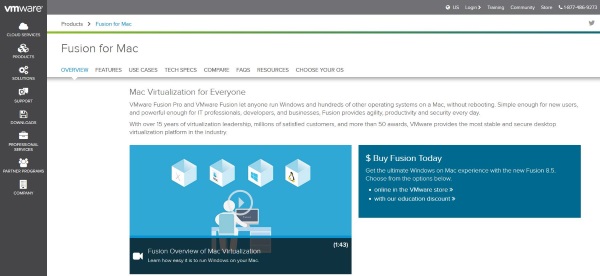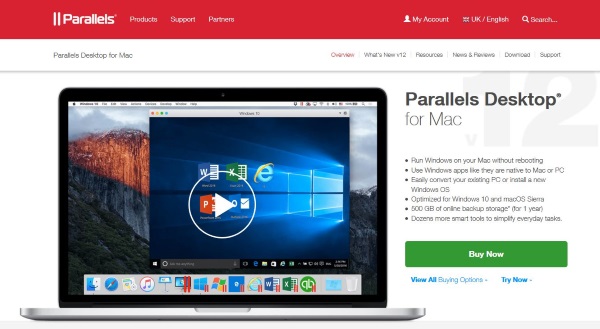Best Mac Virtualization: VMware vs Parallels

When considering virtualization within Apple, there are two names that immediately come to mind, Parallels and VMWare Fusion. While there are lots of others out there like VirtualBox or Boot Camp, people keep coming back to these two. So which is best for virtualization on a Mac, VMware or Parallels?
Boot Camp is pretty good at allowing you to run virtual Windows installation from within Mac OS but it isn’t perfect. It lets you play games and work with some apps but requires you to shut OS X down to do it. If you’re programming or testing, this is a bit of a pain. What you need is virtualization.
What is virtualization?
Virtualization is where you create a shell using special software that creates a virtual computer within your actual computer. It fools the operating system within the shell that it is the only one there and has unlimited access to your computer hardware. Basically it is a software simulator that fools it into thinking it is the main OS.
The computer that has virtualization installed on it is called the host. The operating system installed within the virtualization software is called the guest.

VMware Fusion
VMware Fusion costs $79.99 for unlimited installations and is the little brother of VMware Pro. It is a fully featured virtualization program that offers a lot of features for the money. It is fully supported, has good documentation and a very active community. It is a well-rounded product.
The program itself installs quickly and contains a very good setup wizard for both the program and the VM itself. Installing a virtual machine is more complex than installing a normal app and VMware Fusion does a good job of walking you through it.
VMware Fusion manages system resources very well. Once you allocate hard disk, RAM, video memory and ports to your guest OS, VMware Fusion trues to keep everything balanced. It runs smoothly and while boot is a little slow, running apps and programs within the guest OS is smooth and seamless.
VMware Fusion is primarily aimed at Enterprise so the UI and documentation assume a level of competence. While this might require a little extra work for the newcomer to VMs, it doesn’t take long to get to grips with the program and shortcut keys to control everything.
Overall, VMware Fusion offers great value for money and a wide range of powerful and useful features. It is simple to install and run and manage both host and guest resources well.

Parallels
Parallels costs $79.99 for a single installation. It is very similar to VMware Fusion in terms of features, look and feel but is aimed firmly at home users. This means it is slightly easier to get to grips with. It too is fully supported and has an active community. The documentation is better though.
Parallels installs quickly and will have you up and running in minutes. It also contains a very good setup wizard for the program itself and the virtual machines. In fact, I would say the wizard here is better as it is aimed more at home users. So for first time users at least, is a good place to start.
Parallels is also good at managing system resources. Once you strike the balance between allocating as much as possible to the VM without leaving OS X short you should run many programs without issue.
You can tell Parallels is aimed at consumers as the UI is more friendly and it holds your hand more as you use it. This is ideal for that market as it takes much of the guesswork out of using VM. Despite this extra attention, it doesn’t get too much in the way and will leave you alone if you need it to.
Overall, I found Parallels to run faster than VMware Fusion. It offers good value for money, while a little less than its competitor and is easy to install and use.
So which is best for virtualization on a Mac, VMware or Parallels?
There is no clear winner here as they are too close to call. I would say that if you’re tech savvy and a quick study, you may prefer VMware Fusion. It works very well, can run most programs and is very stable. If you’re a home user who wants to play a little with VM, I would say Parallels might be more useful. It boots very quickly, is simple to get to grips with and does everything well. There is only a downside if you want to run it on multiple machines as Parallels is a single-use license.
I hope that helps!

















2 thoughts on “Best Mac Virtualization: VMware vs Parallels”